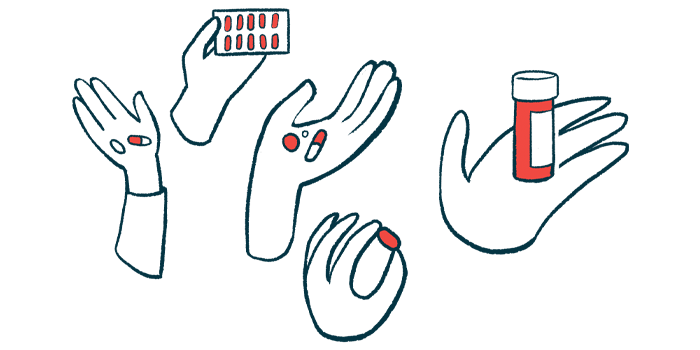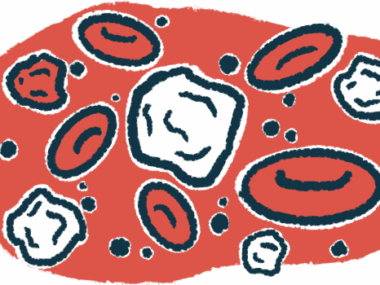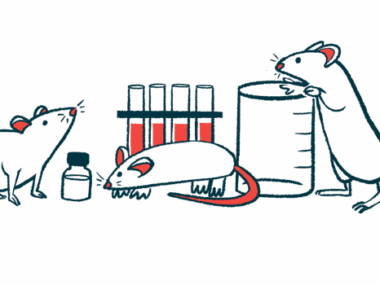Triple treatment combo works best for UDCA-resistant PBC: Study
Fibrates added to UDCA, Ocaliva to treat patients in real-world study
Written by |

A triple treatment combination adding fibrates — a type of medication that has shown promise in primary biliary cholangitis (PBC) — to dual therapy with ursodeoxycholic acid (UDCA) and Ocaliva (obeticholic acid) works best for treating people with UDCA-resistant PBC.
That’s according to a real-world study that analyzed data from PBC patients in Spain and Portugal who failed to adequately respond to first-line therapy with UDCA, sold in the U.S. as Urso and Actigall, with generics available.
The findings highlight that “triple therapy outperformed dual therapy,” further supporting previous research suggesting that adding fibrates to UDCA and Ocaliva further improves outcomes due to potential combinatory effects “by targeting different mechanisms,” the researchers wrote.
The study, “Longitudinal outcomes of obeticholic acid therapy in ursodiol-nonresponsive primary biliary cholangitis: Stratifying the impact of add-on fibrates in real-world practice,” was published in the journal Alimentary Pharmacology and Therapeutics.
Investigating the long-term benefits of triple combination treatment in PBC
PBC is a chronic form of cholangitis, or inflammation of the ducts within the liver that transport bile, a digestive fluid, out of the liver and into the intestines. Cholangitis results in the toxic accumulation of bile in the liver, causing damage and scarring, which in turn allows bile acids to leak into the bloodstream, causing itching and other symptoms.
The first-line treatment for PBC is ursodeoxycholic acid, called UDCA for short, a water-soluble bile acid sold as Ursobilane in Spain and Ursofalk in Portugal. UCDA helps bile flow more easily, thus helping to delay liver damage and scarring. However, nearly half of patients — about 4 in 10 — fail to respond to UDCA.
Ocaliva is a second-line PBC therapy that works by modulating the activity of farnesoid X receptor, a liver protein that helps control bile movement. It is cleared for use in combination with UDCA in patients who don’t respond well to UDCA alone, or on its own when UDCA is not tolerated. However, Ocaliva can worsen itching in some cases.
Fibrates, a form of medication that lowers fatty molecules in the blood, have shown some promising effects in PBC patients in clinical trials and real-world studies. These effects are thought to be associated with fibrates’ ability to activate PPARs, a family of proteins that regulate gene activity related to PBC-driving processes.
However, the long-term benefits of second-line therapy for treating PBC patients remain unclear.
To learn more, the researchers retrospectively analyzed data from 255 PBC patients in Spain and Portugal who didn’t respond to UDCA after one year of treatment and who subsequently received either UDCA plus Ocaliva or UCDA plus Ocaliva and a fibrate.
Most patients (about 91%) were women. They were started on UDCA plus Ocaliva at a mean age of 57.4, and were followed over a median of 35.1 months, or just shy of three years.
Nearly one-quarter (22%) received add-on fibrates a median of 18 months after the start of dual therapy. For 43 patients, this was because the therapy was not effective. For 14, it was due to itching. Among those on fibrates, most (84.2%) received bezafibrate, while 15.8% were given fenofibrate.
Biochemical response over 65% more likely for patients also given fibrates
The study’s main goal was to assess the proportion of patients achieving a biochemical response, defined as a reduction in the blood levels of alkaline phosphatase (ALP) to 1.67 times the upper limit of normal, with a 15% or greater drop from treatment start, alongside normalization of bilirubin levels. Both ALP and bilirubin are markers of liver damage, and are usually high in people with PBC.
The second main goal was to evaluate the proportion of patients experiencing biochemical remission, or normalization of levels of ALP, bilirubin, and aminotransferases, other liver damage markers.
The results showed that the proportion of patients who achieved biochemical response increased over time, from 47.2% at one year to 61.4% at two years, and 68.6% at three years. It’s believed that reducing ALP and bilirubin levels may predict clinical benefit in these patients.
Patients on the triple treatment combination were 67% more likely to achieve a biochemical response as compared with those on dual therapy. These individuals also were nearly four times more likely to achieve biochemical remission.
Median GLOBE-PBC scores, which predict the risk of worse outcomes in PBC, were significantly lower over time for patients on the triple treatment compared with those on dual therapy, indicating longer survival without the need for a liver transplant.
These long-term, real-world results show a significant improvement in … markers of PBC outcomes.
Among patients reporting moderate to severe itching, starting Ocaliva was associated with a reduction in itching, as was the subsequent initiation of fibrate therapy. Ocaliva treatment was discontinued in 19% of patients due to itching, intolerance, and other reasons.
Of the 55 patients with cirrhosis, or permanent liver scarring that affects the organ’s function, 12 (22%) developed liver decompensation, when liver function becomes severely impaired. All of these patients had pre-existing portal hypertension, or high blood pressure in the large blood vessel that drains into the liver.
Consistent with previous observations that fibrates may add benefits to first-line therapy, these findings indicate that adding bezafibrate or fenofibrate to UDCA plus Ocaliva may lessen signs of liver damage and prolong transplant-free survival in people with UDCA-resistant PBC.
“These long-term, real-world results show a significant improvement in … markers of PBC outcomes,” the researchers wrote, noting that “integrating real-world populations into research significantly improves external validity” of randomized clinical trials.








